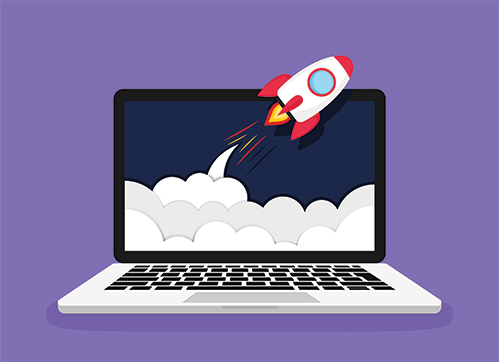
A successful B2B product launch requires more than just a product launch strategy. It demands a thoughtful orchestration of creativity, strategic planning and an understanding of market dynamics. We’ve interviewed seasoned marketing executives in our series “Marketing Insights from Executives” focused on product launch strategy lessons learned. This article combines a few of the top lessons learned along with key best practices, offering a comprehensive guide for those navigating the complexities of product launches.
Lesson 1: Craft Meaningful Connections Through Interactivity
Instill your product launch with interactivity to forge meaningful connections. Blend education with entertainment, creating an experience. This involves exclusive events allowing customers to interact with the product, coupled with elements like entertaining videos or unconventional launch venues. The goal is to create an experience that resonates, fostering growth and sustained engagement.
Lesson 2: Collaborate Across Departments
Recognize that a successful product launch is not solely a marketing endeavor, it’s a cross-functional effort. Embrace structured New Product Introduction (NPI) processes or product launch processes, incorporating gate reviews and active executive engagement. In an enterprise environment, collaboration across divisions is essential for effective planning and execution. For example, involve customer success teams prominently in go-to-market planning and include the engineering team in product marketing discussions. Collaboration across departments ensures a holistic approach, enabling seamless planning and execution.
Lesson 3: Be Strategic About Product Names to Add Longevity
Choose product names strategically. A well-thought-out name can transcend the immediate launch, becoming a theme for subsequent marketing efforts. Align the name with a thematic concept that can be seamlessly incorporated into various campaigns, ensuring lasting impact and brand recognition.

Get your new product or service on the right trajectory. Download our free Product Launch Toolkit for executive-level insights to planning and executing a profitable product launch.
Lesson 4: Avoid Dependency on Third-Party Technologies
Exercise caution against tying your product launch strategy story too closely to third-party technologies. Over-reliance on external factors can leave your launch vulnerable to last-minute changes beyond your control. Maintain autonomy over crucial aspects to ensure a smoother and more predictable launch.
Lesson 5: Understand Demand and Expand Beyond Peak Seasons
Expand demand beyond peak seasons by understanding your audience. Launch campaigns strategically outside of traditional high-traffic periods that tend to have higher competition. Through conducting early-stage market research you can start to understand what would be a compelling offer and help drive demand during periods of historically lower conversion rates.
Lesson 6: Leverage Data for Informed Launches
Harness user experience data to shape informed product launches. Implement tools that provide real-time insights into user behavior, helping identify pain points and popular features. Collect customer feedback before the product is available to the general public to ensure that the product aligns with genuine user needs. This accelerates development cycles and directs content strategies toward resonating with the target audience.
Lesson 7: Offer Free Trials Strategically
Incorporate a self-service option into every product launch, such as free trials or freemium versions. Provide enough functionality in the free version to entice users while reserving premium features for paid access. This strategic approach gathers valuable feedback and facilitates a more natural conversion process.
Lesson 8: Align with the Buyer’s Business Model
Understand how your product fits into the buyer’s business model before entering sales conversations. Identify the real need a prospect has for the product’s solution and understand their financial motivations. This knowledge is crucial to avoid wasting time with prospects who are not motivated to close.
Lesson 9: Focus on Value
Avoid gimmicks that don’t align with the product’s value. Customers prioritize understanding the impact a product will have on their business more than over the top creative themes. It is important to ensure that the creative aspects of your launch resonate with the positive impact your product delivers.
Lesson 10: Research Before Seizing Opportunities
Conduct in depth research before seizing opportunities, especially unconventional ones. Understand your audience, the market fit and the resources required for successful execution. This ensures that creative concepts align with your goals and messaging resonate with your audience.
A Holistic Approach to Triumph
The combination of these lessons and best practices presents a holistic approach to B2B product launches. From crafting meaningful connections and understanding demand to leveraging user experience data and conducting thorough research before seizing opportunities, success lies in the thoughtful orchestration of these practices. In a rapidly evolving market, weaving together these insights into a comprehensive strategy promises not just a launch but a resounding success.
If you need a partner to streamline your launch planning and execution, look no further. With over two decades of experience and a track record of 60+ successful launches, Launch Marketing specializes in creating effective strategies that drive results. Contact us today for a free marketing consultation and let us help you with your product launch marketing plan.
There are no comments